The Luxury Ostrich Eggs Of The Bronze And Iron Age Upper Class
11:31 minutes
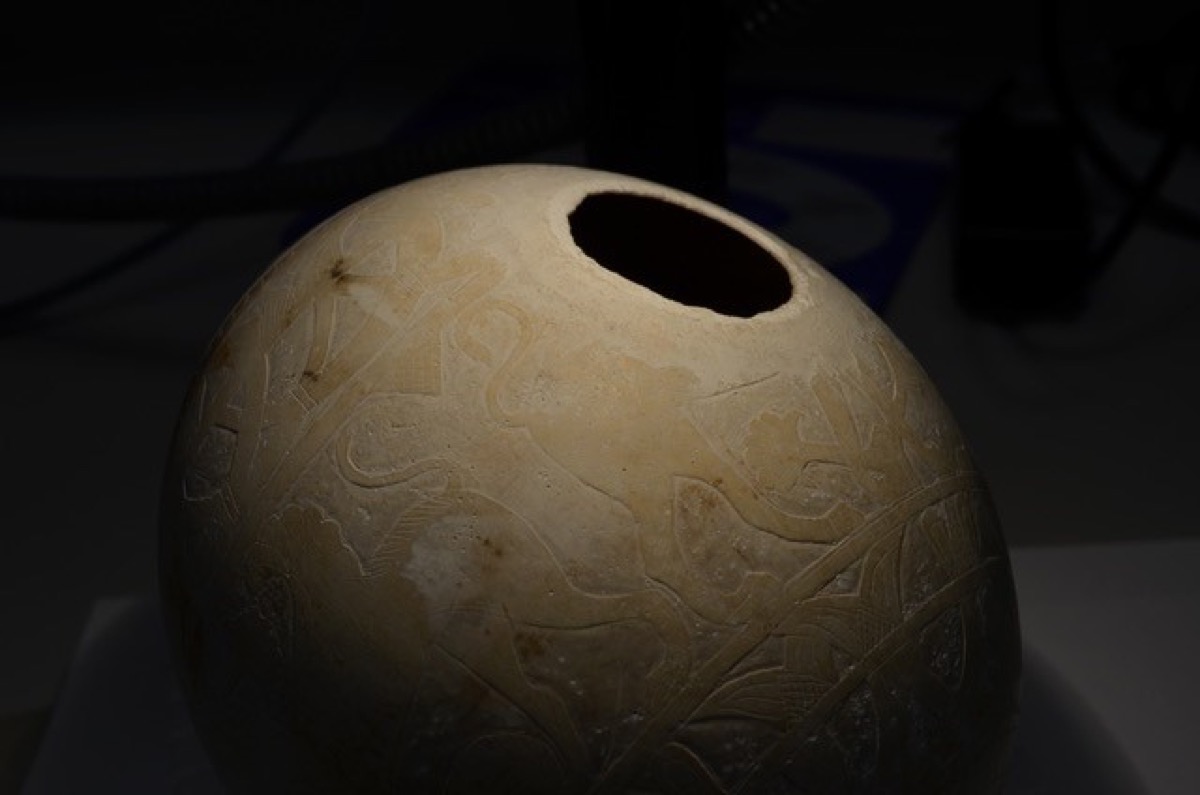
Today, if you want to show off that you’ve made it, you might buy a top-of-the-line Rolex watch, or line your garage with Ferraris and Rolls Royces. But in the Iron and Bronze age, one of the luxury goods of choice was to put a highly decorated ostrich egg in your tomb. These status symbols have been found in multiple European Iron and Bronze Age locations, despite ostriches not being indigenous to the area. A team of scientists wanted to know the origins of these eggs—and just how they made it from Africa into the hands of the Iron and Bronze Age elite. Mediterranean archaeologist Tamar Hodos, an author on the study recently published in Antiquity, explains how the team determined that these eggs came from wild ostriches, rather than captive birds, and what this reveals about the ancient luxury trade. See a gallery of these ostrich eggs below!
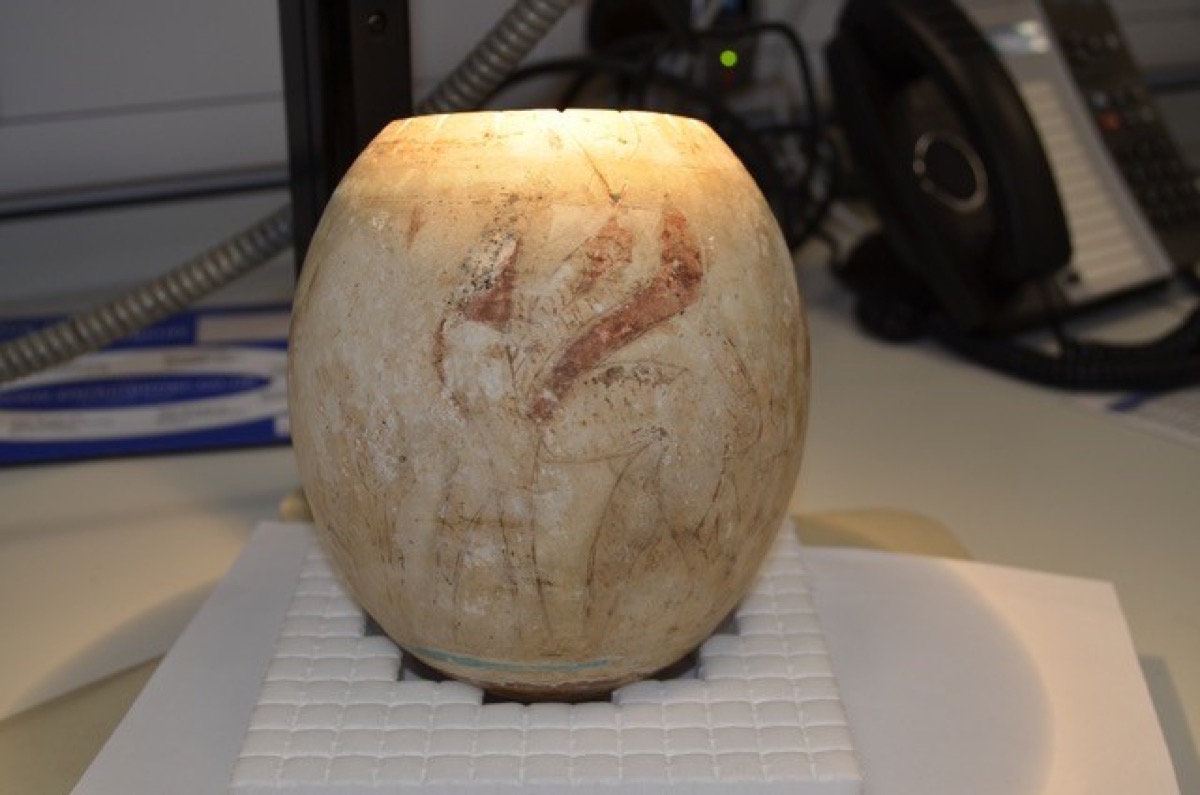
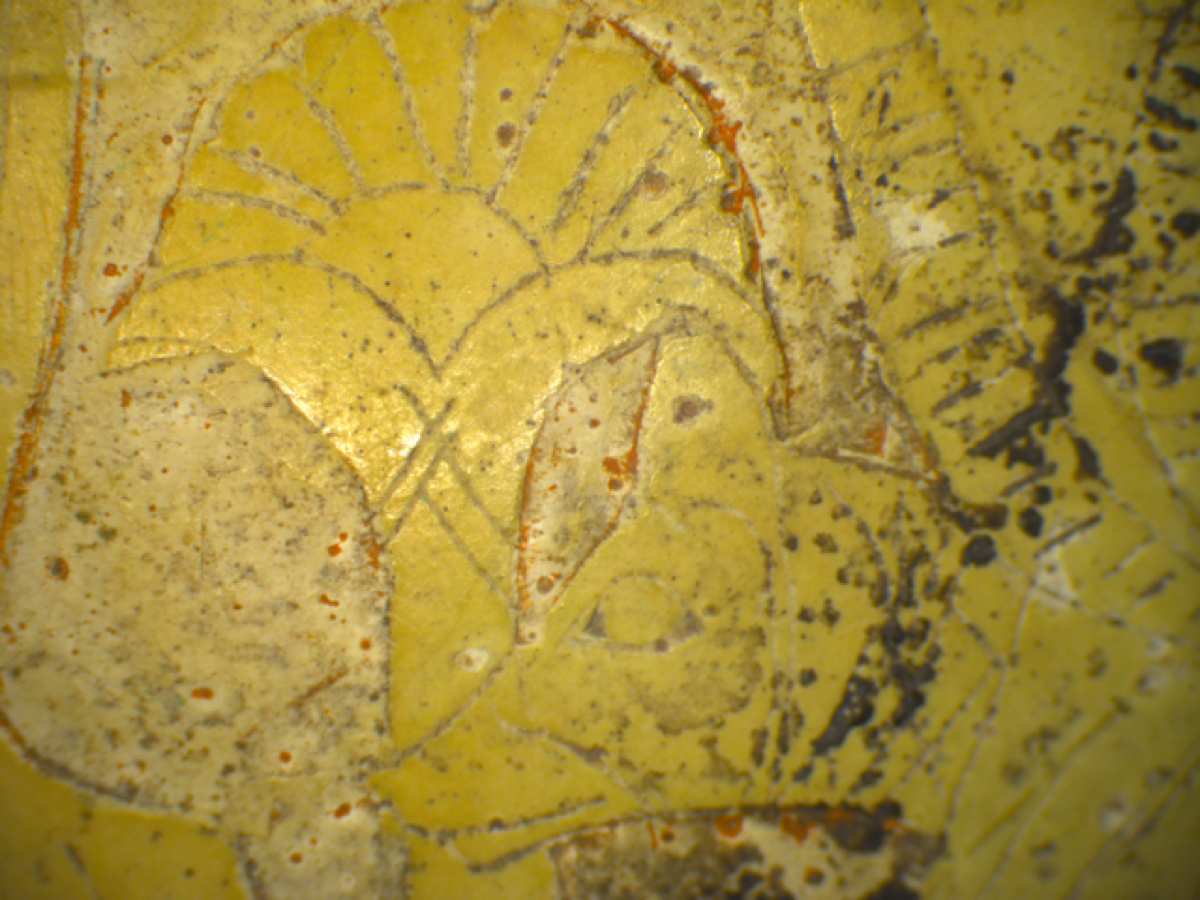
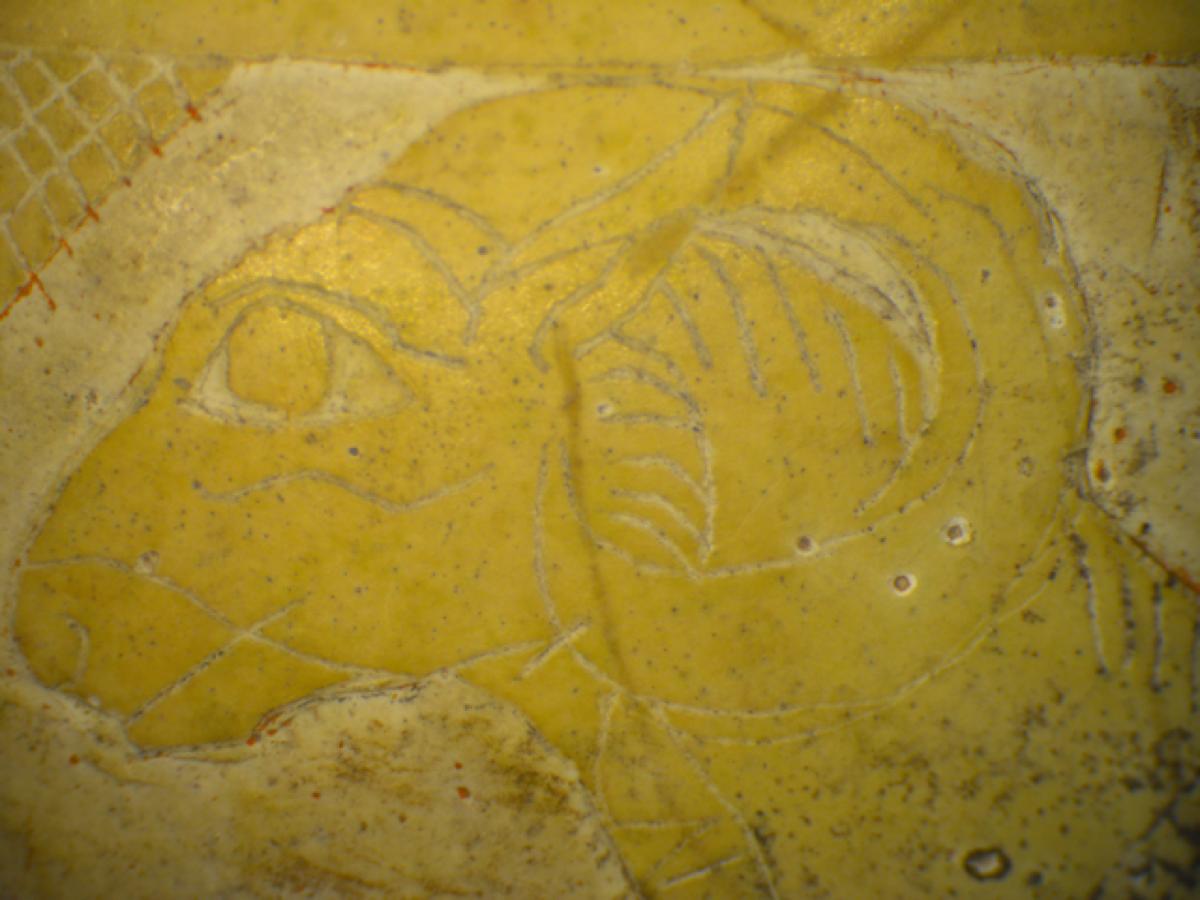
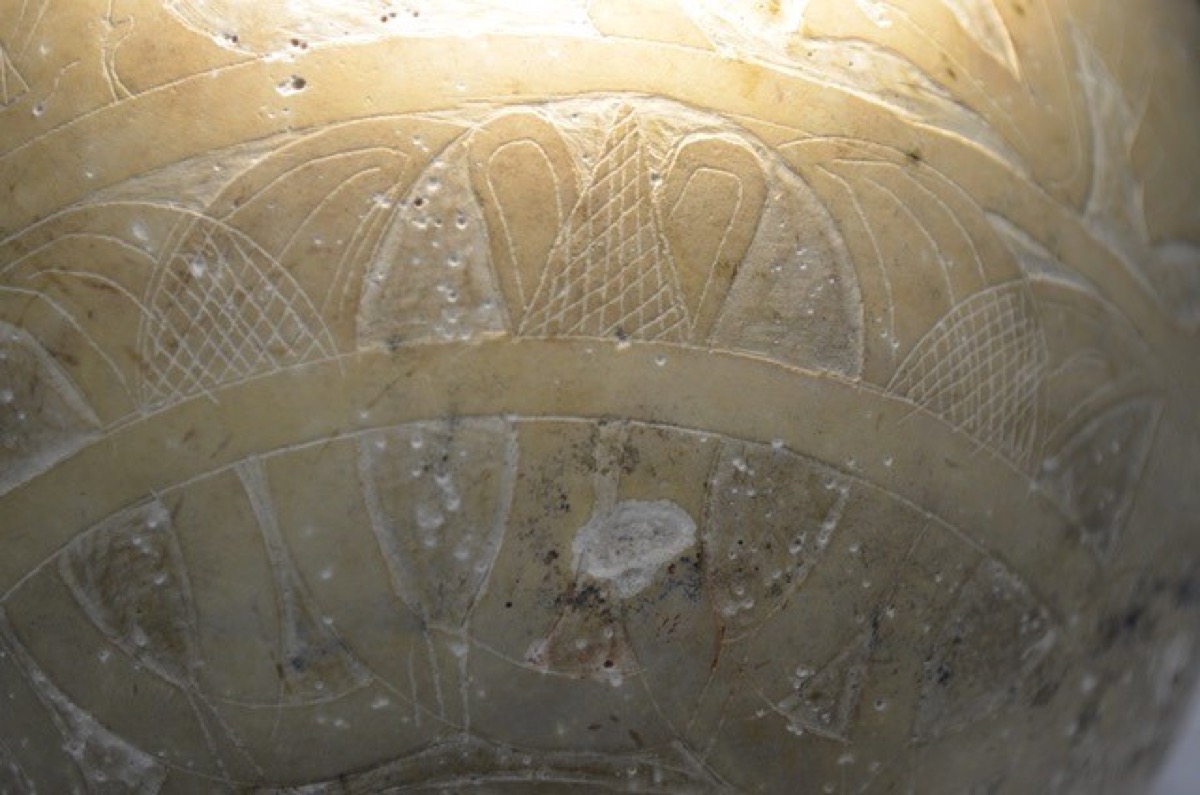
Invest in quality science journalism by making a donation to Science Friday.
Tamar Hodos is a reader in Mediterranean Archaeology at the University of Bristol in Bristol, England.
IRA FLATOW: This is Science Friday. I’m Ira Flatow. Just to note that we won’t be taking your calls during this pre-recorded hour of the show. First up, when you want people to know that you’ve really made it, there are certain symbols or objects that you buy to show off, right? Could be a Rolex watch that cost as much as a down payment on a house. Could maybe be a garage full of cars, Ferraris and Rolls-Royces.
But back in the Iron and Bronze Age, if you wanted to flaunt your worth, you’d have a tomb full of carved ostrich eggs. Why ostrich eggs? And how did you get your hands on one? That’s what a team of scientists wanted to know. Their findings were published this week in the journal Antiquity. Science Friday producer, Alexa Lim, spoke to Tamar Hodos, an author on that study and a specialist in Mediterranean archeology at the University of Bristol in Bristol, England.
ALEXA LIM: Welcome to Science Friday.
TAMAR HODOS: Thank you. I’m really delighted to be here.
ALEXA LIM: I guess my first question when I heard about these ostrich eggs is, what were they doing with them? They weren’t walking around with them in their arms kind of saying, look at me, right? Here I am.
TAMAR HODOS: The ones that we find in the Mediterranean are almost always in funerary contexts. So they’re turning up in graves. Some of them are incredibly ornately decorated. They were fashioned into cups or jugs. So they would have had metal fittings, metal attachments to them, but they were also painted or carved with animal motifs, geometric motifs, floral motifs. Sometimes they show charioteers. So they’re really ornately decorated.
What we’re not sure is exactly how they were being used. Were they being used as part of the funerary rituals? Or do they have some other additional, perhaps symbolic, value? We really don’t know, and it’s likely to have differed from culture to culture. In the case of the Isis Tomb in the British Museum, which is the one that kind of kickstarted the whole project, there were five. So this is a really, really rich grave.
ALEXA LIM: So it was still like Iron Age and Bronze Age bird bling though?
TAMAR HODOS: Pretty much, yes. Bird bling, I like that.
ALEXA LIM: And decorating eggs isn’t only an Iron Age fad. You know, there were Russian czars that collected Fabergé eggs. Easter is coming up. I mean, you said there’s even an International Egg Art Guild?
TAMAR HODOS: Well, the ostrich egg carving is a popular activity in the United States, in particular in North America, and also in the Far East in China. There has been an Egg Crafters Guild of Great Britain, although sadly it closed down a few years ago because of dwindling interest, but it was very, very active for a number of years, and they had competitions that they ran.
I conducted an interview with the president of the Egg Crafters Guild of Great Britain because I wanted to learn more about modern egg carving practices. And what she told me was that an egg needs to be left to dry naturally once it’s been blown, once it’s been emptied. It needs to be left to dry naturally for at least six months, and ideally, up to two years before it’s ready to be carved. And this was something I was unaware of before.
But in terms of my interest in the production of these ancient ostrich egg as luxury items, that suddenly added a whole new dimension of the complexity of their production-manufacture process because it now adds a time element to it. You’re not going to get a quick return from stealing your ostrich egg from the ostrich’s nest. You now have to wait for it to dry naturally. You can’t put it in the oven. You can’t leave it out to dry in the sun. It needs to be left in stable conditions for an extended period of time. And that surely adds to its value status because now we know it takes a long time to make as well.
ALEXA LIM: Right. And I do want to come back to that. One of the basic questions that you had in your study is these eggs were found in Italy, but there aren’t ostriches in that part of the world. Where were they coming from?
TAMAR HODOS: That, in fact, was the underlying question that was driving this. Ostrich eggs, in particularly the Iron Age, in the first millennium BCE, do turn up with, I guess I would say, surprising frequency in elite contexts, in elite burials, not only in Italy, but also particularly in Spain, a number have been recorded, and elsewhere across the Mediterranean in regions where ostriches are not indigenous. And it does raise a question of where they’re coming from. Ostriches in antiquity were indigenous to North Africa and the Levant.
ALEXA LIM: Then they weren’t penning these birds locally then? You had to get them where they were–
TAMAR HODOS: No. No, there’s no evidence that ostriches in this era were living in Italy. The eggs themselves were coming from somewhere along the eastern Mediterranean, possibly North Africa. We conducted isotopic analyses to look at the chemical elements that underpin the egg shell to determine past diet, past paleo environments.
And what we were able to determine was that the eggs seemed to group into eggs laid in a cooler, wetter environment versus eggs laid in a hotter, drier environment. And the distinguishing line geographically turns out to be 30 degrees north latitude, which just cuts below the Nile Delta. So for the purposes of determining where these eggs in the Isis Tomb came from, unfortunately we cannot yet distinguish between the Nile Delta and, say, the Phoenician homeland because they both are represented in that cooler, wetter environmental condition.
But the most startling discovery we made in that regard was that just because you could source an ostrich egg locally doesn’t mean you necessarily did. So in sites in the cooler, wetter zone we found occasionally an example of an egg that had been laid in the hotter, drier zone, or where the mother was in a hotter, drier zone during ovulation and vice versa.
That adds a whole new level of questions about whether the raw eggs themselves, the unworked eggs, were those a source of trade in their own way? So this raises a question of whether there was also a sense of value in eggs that came from a different region.
ALEXA LIM: You wanted to know if these were from domestic or wild ostriches, and your study found that these came from wild birds. What does that tell you?
TAMAR HODOS: Well, it tells us that they came from wild birds. But what that means is that somebody had to go and track the birds to find out, or work out, establish where those nests were. And then they had to steal the eggs from the nest. An ostrich is an incredibly dangerous animal. They can kill you with a single kick, and their beaks are nasty. [LAUGHS] They’re really sharp.
So the ostrich was well known in antiquity to be an incredibly dangerous animal. Many cultures talk about them as wild beasts. And so somebody had to go and track, somebody had to go and collect– steal– and then there’s this aspect of the eggs needed to be stored safely for an extended period of time before they would be ready for decoration.
ALEXA LIM: You had to be a very experienced craftsman to carve into these egg shells. What did you find out about the techniques that were used to make these eggs?
TAMAR HODOS: We had bought a fresh ostrich egg, drained the egg, made a lot of cakes and quiches that kept us going for several days, and used a number of tools to try to replicate the smoothing and the polishing and the buffing as well as the incision marks. We were able to reproduce some of the marks that we could see, particularly under the scanning electron microscope.
Some of the motifs that we see, certain patterns that have been carved in some way, we are not entirely sure how they were made. We were absolutely unable to reproduce those. We have more work to be done in this regard.
ALEXA LIM: OK, so you’ve figured out these origins of these decorated eggs. So what is this telling you overall about the network of Bronze and Iron Age luxury items, how things were flowing?
TAMAR HODOS: There’s a much more complex mechanism in luxury production. We tend to think about the luxury objects from the perspective of their find spots, which were with their users, their consumers, if you want. So we find them in these luxury graves. And as archeologists, we often use this to look at the status of the individual and regard it from the perspective of where it was found. But rarely have we considered the whole mechanism to produce such an object.
Because you’re not going to have an elite person going off and trying to steal eggs from a very dangerous animal. And the craftsmen themselves are– they’re the craftsmen, they’re not the elites, but they’re very highly skilled. And perhaps you needed someone who is a specialist in metal working to put those metal fixtures onto the vessel, and that may well have been a different person who was the artisan who was carving the egg or painting the egg because different skills are required.
And so there’s a whole class or variety of people involved in this wider luxury production industry, if you want to call it that. I mean, it implies it’s on a much bigger scale. And it affects many more people than just the final users.
ALEXA LIM: What other type of luxuries were there during this time?
TAMAR HODOS: Well, the most obvious that we would resonate with are metals, so gold and silver, but also ivory was a luxury item. Woods, there were luxury woods, ebony wood, cedar wood– the cedars of Lebanon we recognize now. So there are a whole host of other organic luxuries.
Giant clam shells, Tridacna shells that originate from the Red Sea, are found in the Mediterranean, particularly during the first millennium. They were also carved and painted. We believe they were used as cosmetic containers. But again, that’s another piece of evidence of the far-reaching exchange trade mechanisms and that highly skilled artisanship of ancient craftsmen and then this connection to luxury desire by elites.
ALEXA LIM: If you were going to decorate your tomb, which one would you choose?
TAMAR HODOS: Ooh, that’s a really good question. Oh, I don’t know if I could choose.
ALEXA LIM: You’d have them all.
TAMAR HODOS: I’d have them all. Absolutely, I’d have them all.
ALEXA LIM: Thanks so much for joining us.
TAMAR HODOS: Thank you very much for having me.
IRA FLATOW: Producer, Alexa Lim, speaking with Tamar Hodos, a specialist in Mediterranean archeology at the University of Bristol in England.
Copyright © 2020 Science Friday Initiative. All rights reserved. Science Friday transcripts are produced on a tight deadline by 3Play Media. Fidelity to the original aired/published audio or video file might vary, and text might be updated or amended in the future. For the authoritative record of Science Friday’s programming, please visit the original aired/published recording. For terms of use and more information, visit our policies pages at http://www.sciencefriday.com/about/policies/
Alexa Lim was a senior producer for Science Friday. Her favorite stories involve space, sound, and strange animal discoveries.